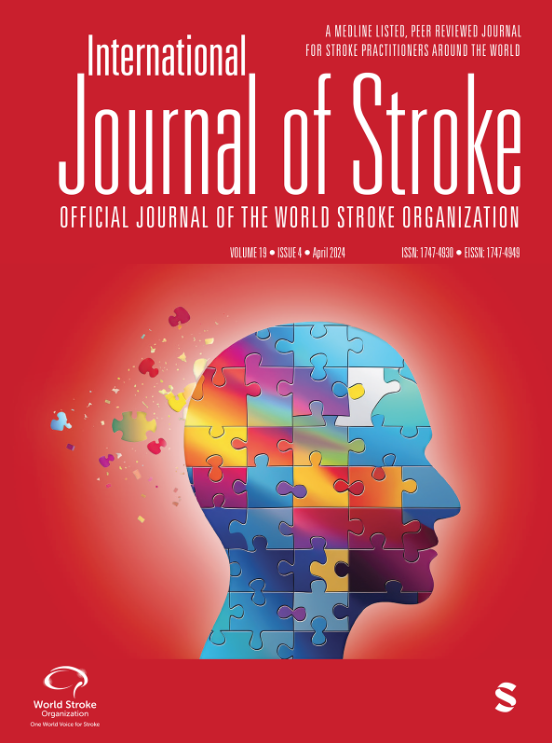血管性认知障碍和痴呆症:机制、治疗和未来方向
IF 6.3
2区 医学
Q1 CLINICAL NEUROLOGY
引用次数: 0
摘要
全世界约有 5000 万人患有痴呆症,预计到 2050 年,这一数字将增加两倍。据估计,在所有痴呆症病例中,有 20% 主要是脑血管病变,而另外 20% 的血管疾病可能会导致混合型痴呆症。因此,目前受血管性痴呆影响的患者有 2,000 万人,而且在未来几十年中还将显著增加,尤其是在中低收入国家。在这篇综述中,我们将讨论血管性认知障碍(VCI)的发病机制,并对其管理进行回顾。血管性认知障碍是指导致任何程度认知功能障碍的脑血管病变,包括主观认知功能下降、轻度认知功能障碍和痴呆。虽然中风后不久出现的急性认知功能下降是最常见的 VCI 形式,但慢性脑血管疾病,尤其是脑小血管疾病,可在没有中风的情况下引起隐匿性认知功能下降。此外,脑血管疾病不仅常与阿尔茨海默病(AD)并发,增加了 AD 病变导致临床痴呆的几率,还可能从病因学上导致 AD 病变的发生。尽管 VCI 对健康和经济有巨大影响,但它一直是一个被忽视的研究领域,很少有充分有效的治疗试验,因此几乎没有行之有效的治疗方法。目前对 VCI 的治疗强调中风和血管风险因素的预防和治疗,大多数证据表明应加强高血压控制。急性中风的再灌注疗法可减轻 VCI 风险。相关的行为症状如冷漠和卒中后情绪化很常见。我们还强调了新的治疗策略,希望这些策略能带来新的改变病程的疗法。最后,我们强调了将认知终点纳入大型心血管预防试验的重要性,以及加强对这一重要领域的研究关注和资金投入的必要性。本文章由计算机程序翻译,如有差异,请以英文原文为准。
Vascular cognitive impairment and dementia: Mechanisms, treatment, and future directions
Worldwide, around 50 million people live with dementia, and this number is projected to triple by 2050. It has been estimated that 20% of all dementia cases have a predominant cerebrovascular pathology, while perhaps another 20% of vascular diseases contribute to a mixed dementia picture. Therefore, the vascular contribution to dementia affects 20 million people currently and will increase markedly in the next few decades, particularly in lower- and middle-income countries.In this review, we discuss the mechanisms of vascular cognitive impairment (VCI) and review management. VCI refers to the spectrum of cerebrovascular pathologies that contribute to any degree of cognitive impairment, ranging from subjective cognitive decline, to mild cognitive impairment, to dementia. While acute cognitive decline occurring soon after a stroke is the most recognized form of VCI, chronic cerebrovascular disease, in particular cerebral small-vessel disease, can cause insidious cognitive decline in the absence of stroke. Moreover, cerebrovascular disease not only commonly co-occurs with Alzheimer’s disease (AD) and increases the probability that AD pathology will result in clinical dementia, but may also contribute etiologically to the development of AD pathologies.Despite its enormous health and economic impact, VCI has been a neglected research area, with few adequately powered trials of therapies, resulting in few proven treatments. Current management of VCI emphasizes prevention and treatment of stroke and vascular risk factors, with most evidence for intensive hypertension control. Reperfusion therapies in acute stroke may attenuate the risk of VCI. Associated behavioral symptoms such as apathy and poststroke emotionalism are common. We also highlight novel treatment strategies that will hopefully lead to new disease course-modifying therapies. Finally, we highlight the importance of including cognitive endpoints in large cardiovascular prevention trials and the need for an increased research focus and funding for this important area.
求助全文
通过发布文献求助,成功后即可免费获取论文全文。
去求助
来源期刊

International Journal of Stroke
医学-外周血管病
CiteScore
13.90
自引率
6.00%
发文量
132
审稿时长
6-12 weeks
期刊介绍:
The International Journal of Stroke is a welcome addition to the international stroke journal landscape in that it concentrates on the clinical aspects of stroke with basic science contributions in areas of clinical interest. Reviews of current topics are broadly based to encompass not only recent advances of global interest but also those which may be more important in certain regions and the journal regularly features items of news interest from all parts of the world. To facilitate the international nature of the journal, our Associate Editors from Europe, Asia, North America and South America coordinate segments of the journal.
 求助内容:
求助内容: 应助结果提醒方式:
应助结果提醒方式:


